An overprotective dog can be both a blessing and a challenge. While their loyalty and vigilance are endearing, this behavior can escalate into unnecessary aggression or anxiety, creating stress for both the dog and its owner. Overprotectiveness often stems from fear, insecurity, or misinterpreted training, and it’s a common issue among many dog owners.
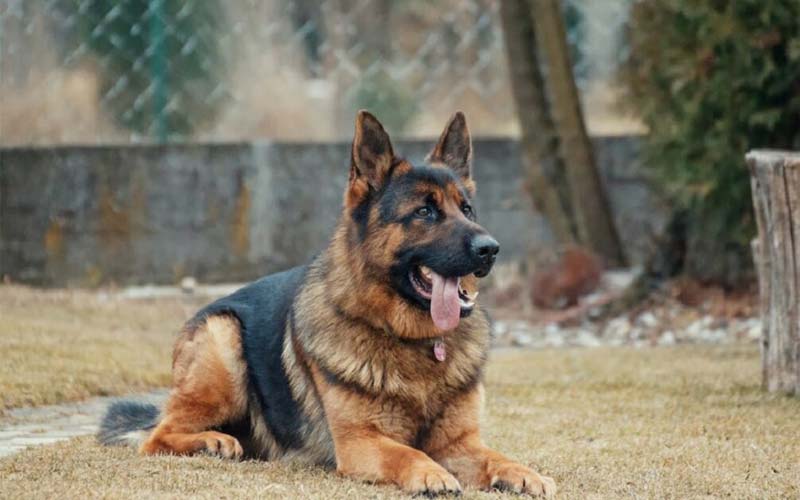
Addressing this behavior is crucial—not only to ensure the safety of those around you but also to foster a balanced, confident relationship with your dog. In this article, we’ll explore how to recognize the signs of overprotectiveness, understand its root causes, and implement practical strategies to help your dog feel secure without resorting to aggressive or possessive tendencies.
With the right approach, you can guide your dog toward a calmer, more trusting demeanor while strengthening your bond in the process. Let’s dive in!
1. Recognizing Overprotective Behavior
What Is Overprotectiveness?
Overprotectiveness in dogs refers to behaviors driven by an excessive desire to guard their owner, territory, or belongings. While it may seem like a display of loyalty, it often stems from deeper issues such as fear, anxiety, or a lack of proper training and socialization. Left unaddressed, these behaviors can escalate into aggression or create a tense environment for both the dog and their human companions.
Common Triggers for Overprotectiveness:
- Fear and Anxiety: Dogs may become overprotective if they perceive a constant threat to themselves or their loved ones. Fearful dogs often misinterpret harmless situations as dangerous.
- Lack of Socialization: Dogs that haven’t been exposed to a variety of people, animals, and environments early in life may struggle to differentiate between normal interactions and actual threats.
- Misinterpreted Training: Owners may unintentionally reinforce protective behaviors by rewarding or praising their dog when they act defensively, even if it’s out of proportion to the situation.
Signs to Watch For:
- Guarding Behavior: Your dog may guard certain objects, such as food, toys, or even you, by standing over them, growling, or snapping at anyone who comes close.
- Excessive Barking, Growling, or Lunging: An overprotective dog may react aggressively toward strangers, other pets, or even family members who approach you or your home.
- Overreacting to Perceived Threats: Common triggers include loud noises, unfamiliar guests, or other dogs. An overprotective dog may escalate quickly from calm to defensive, even in seemingly non-threatening situations.
Recognizing these behaviors is the first step in addressing overprotectiveness. By identifying the root cause and understanding the signs, you can begin to implement strategies to help your dog feel more secure and confident in their surroundings.
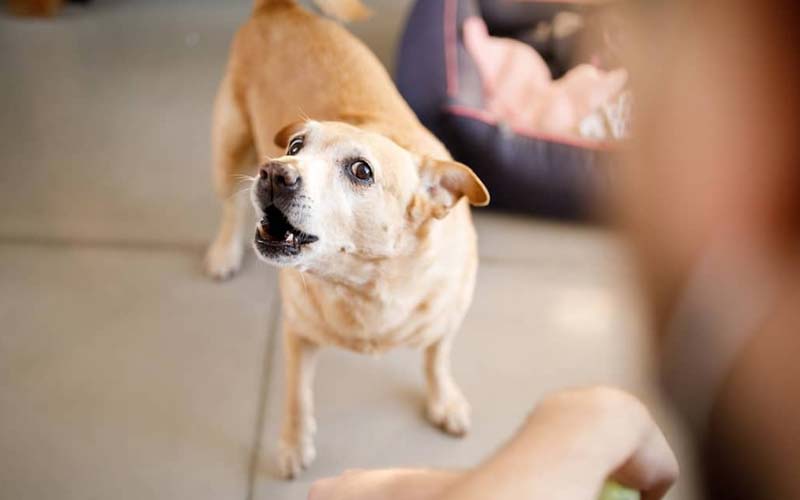
2. Root Causes of Overprotective Behavior
Understanding why your dog exhibits overprotective behavior is essential for effectively addressing it. Often, this behavior is rooted in fear, past experiences, or unintentional reinforcement of undesirable actions. Let’s explore the most common causes:
Fear and Anxiety
Fear is one of the leading causes of overprotectiveness. Dogs that feel insecure or threatened are more likely to adopt a defensive stance to protect themselves or their owner. This fear can arise from:
- Lack of Exposure: Dogs that haven’t been socialized with a variety of people, animals, and environments during their formative weeks (3 to 14 weeks of age) may view unfamiliar situations as threats.
- Unfamiliar Experiences: Changes in the household, such as a move or the arrival of new family members, can heighten a dog’s anxiety and lead to protective behaviors.
Past Trauma
Rescue dogs, especially those with histories of neglect or abuse, are often more prone to overprotectiveness.
- Survival Instincts: Dogs that experienced hardship may develop a heightened sense of vigilance, perceiving danger even in safe environments.
- Trust Issues: A lack of trust in humans or other animals can cause the dog to cling to one person while guarding them aggressively from others.
Unintentional Reinforcement
Many well-meaning owners unintentionally encourage overprotective behavior without realizing it.
- Reinforcing Guarding: If a dog growls at a stranger and the owner responds by petting or soothing the dog, the dog interprets this as a reward for their reaction.
- Inconsistent Discipline: Failing to correct overprotective behavior consistently can confuse the dog, making them think the behavior is acceptable in certain situations.
By understanding these root causes, you can take proactive steps to address the underlying issues fueling your dog’s overprotectiveness. The next step involves practical strategies to help your dog feel more secure and less reactive.
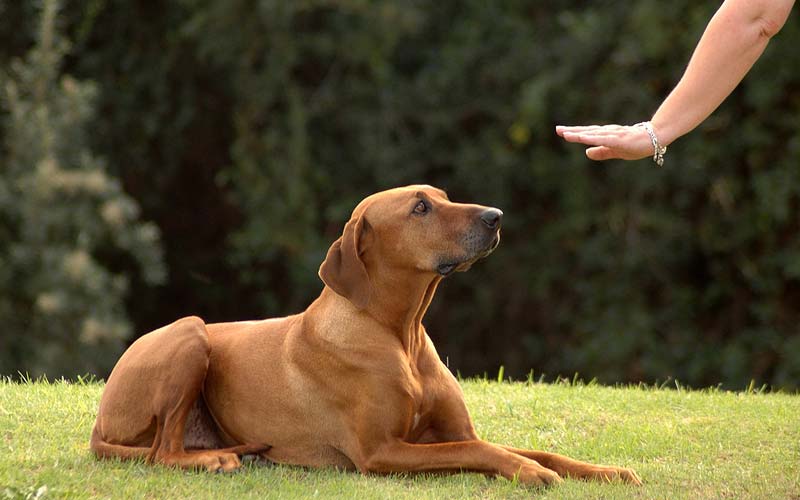
3. Steps to Manage an Overprotective Dog
Managing an overprotective dog requires patience, consistency, and a clear strategy. By implementing proper socialization, obedience training, and leadership techniques, you can help your dog feel more secure and reduce their need to protect excessively.
3.1 Socialization
Proper socialization is critical in reducing overprotective behavior.
Why It Matters: Exposing your dog to a variety of people, animals, and environments helps them develop confidence and recognize that not every situation poses a threat.
Techniques for Safe Introduction:
- Controlled Meetings: Start with calm, friendly individuals or well-behaved dogs in neutral environments.
- Reward Calm Behavior: Use treats and praise when your dog remains relaxed around new people or animals.
- Gradual Exposure: Increase the level of interaction over time, ensuring your dog doesn’t feel overwhelmed.
3.2 Obedience Training
Training your dog to follow basic commands builds their confidence and strengthens your ability to manage situations.
Key Commands to Teach:
- “Sit” and “Stay”: Helps redirect focus and maintain control during encounters.
- “Leave It”: Prevents guarding behavior over objects, spaces, or people.
- “Quiet”: Teaches your dog to stop barking when commanded.
Positive Reinforcement: Reward calm and relaxed behavior with treats, praise, or toys to reinforce desired actions.
3.3 Controlled Leadership
Establishing clear leadership is essential for reducing your dog’s need to take on a protective role.
- Be the Pack Leader: Set boundaries and enforce rules consistently so your dog knows they don’t need to make decisions for the household.
- Avoid Over-Coddling: Reassuring your dog too much when they act protectively can unintentionally reinforce their behavior. Instead, remain calm and assertive to show that you’re in control of the situation.
3.4 Desensitization Techniques
Gradual desensitization helps your dog adjust to triggers in a safe, controlled way.
- Step-by-Step Exposure: Start by introducing the trigger at a distance where your dog feels comfortable. Gradually decrease the distance over time while rewarding calm behavior.
- Use Calming Tools: Consider tools like pheromone sprays, calming collars, or thunder shirts to reduce anxiety during training sessions.
- Consistent Practice: Repeated exposure and positive reinforcement will help your dog associate previously stressful situations with safety and calmness.
With these steps, you can address the root causes of overprotective behavior and guide your dog toward a more relaxed and confident state. Consistency and patience are key, so be sure to celebrate small victories along the way.
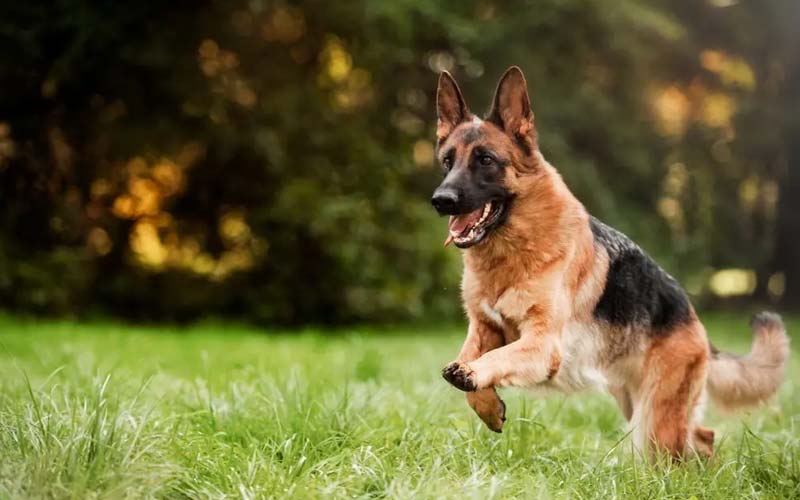
4. Mistakes to Avoid
When managing an overprotective dog, it’s important to approach the situation thoughtfully. Certain mistakes can unintentionally worsen the behavior, making progress harder to achieve. By understanding these common pitfalls, you can avoid setbacks and build a healthier relationship with your dog.
Punishing Aggressive Behavior
Why Punishment Backfires:
Punishing a dog for barking, growling, or lunging can increase their fear and anxiety, reinforcing the behavior you’re trying to correct. Aggression often stems from insecurity, and punishment may make your dog feel even more threatened.
What to Do Instead:
- Redirect their focus using training commands like “sit” or “leave it.”
- Reward calm behavior to encourage trust and positive associations.
Overreacting
The Problem with Overreacting:
Dogs are highly intuitive and often mirror their owner’s emotions. If you respond to their behavior with panic, frustration, or heightened energy, it can escalate their protective instincts.
How to Stay Calm:
- Keep your tone steady and assertive during stressful situations.
- Practice deep breathing or other calming techniques to maintain your composure.
Neglecting Training and Socialization
The Long-Term Impact of Neglect:
Inconsistent training or failure to socialize your dog regularly can prevent progress. Overprotective behaviors are unlikely to diminish without a structured, consistent approach.
Consistency is Key:
- Dedicate time each day to obedience training and controlled exposure to new experiences.
- Involve other household members to ensure everyone reinforces the same rules and techniques.
Avoiding these common mistakes ensures your dog feels supported and guided rather than misunderstood or punished. A calm, consistent, and positive approach is essential for lasting improvement in their behavior.
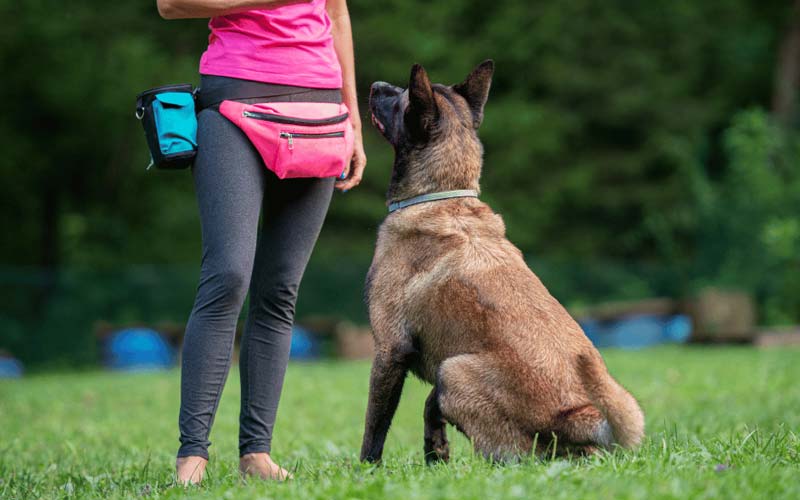
5. When to Seek Professional Help
While many cases of overprotectiveness can be managed with consistent training and socialization, there are situations where professional intervention is necessary. Recognizing when your dog’s behavior is beyond what you can manage at home is crucial for the safety and well-being of everyone involved, including your dog.
Signs That the Behavior Is Beyond Home Management
- Escalating Aggression: If your dog’s protective behavior is becoming more aggressive, such as increased biting, growling, or lunging at strangers, other pets, or even family members, it may be a sign that the situation requires professional attention.
- Inability to Break the Cycle: If you’ve been consistent with training, yet your dog’s overprotectiveness remains unmanageable, or even worsens, it could indicate that more advanced techniques are needed.
- Safety Concerns: If the behavior poses a safety risk to other people, pets, or even the dog themselves, it’s essential to consult with a professional. Overprotective dogs can be unpredictable, and taking steps before an incident occurs can prevent harm.
Importance of Working with a Certified Trainer or Canine Behaviorist
Certified trainers or canine behaviorists specialize in handling complex behavioral issues, including overprotectiveness.
- Expert Knowledge: A professional will assess your dog’s behavior, identify the root causes, and design a tailored training plan to address it.
- Advanced Techniques: Professionals use advanced desensitization techniques, behavior modification strategies, and appropriate tools that may be more effective than home remedies.
- Ongoing Support: Working with a certified expert ensures that you have a support system as you implement the training plan. They can provide valuable feedback and adjust the approach if needed.
How Professional Intervention Ensures Safety for All Parties
- Managing Risk: Overprotective dogs can be unpredictable, and working with a professional ensures that everyone—your dog, family members, guests, and other pets—remain safe. A professional can guide you through safe ways to manage aggressive behavior while reducing the risk of escalation.
- Stress Reduction for You and Your Dog: Having an expert on board can reduce the stress and frustration that often accompanies trying to manage a difficult dog. Knowing that you’re on the right path with proper guidance can also reduce anxiety for both you and your dog.
- Behavioral Outcomes: Professional help increases the chances of long-term success. Dogs that are treated with advanced behavior techniques often experience lasting improvement in their temperament and ability to cope with stressors.
Seeking professional help doesn’t mean failure—it’s a proactive decision to ensure the safety and happiness of your dog and your family. If you notice your dog’s overprotective behavior is beyond your control or escalating, consulting with a certified trainer or behaviorist is the best course of action.

6. Preventative Measures for Future Overprotectiveness
Preventing overprotective behavior from developing in the first place is always the best approach. By laying the right foundation early on, you can help ensure your dog grows into a well-adjusted and balanced adult. Here are key preventative measures that focus on early socialization, consistent training, and keeping your dog mentally and physically stimulated.
Early Socialization Tips for Puppies
Socialization during a puppy’s critical developmental period (3 to 14 weeks) plays a significant role in preventing future overprotectiveness.
Expose to New Experiences:
Start introducing your puppy to different people, dogs, environments, and situations early on. The goal is to help them feel comfortable with a wide variety of experiences.
- Controlled Environments: Attend puppy classes, go on supervised walks in different areas, or organize playdates with other vaccinated puppies or well-behaved adult dogs.
- Positive Reinforcement: Always reward calm and relaxed behavior with treats or praise to create positive associations with new experiences.
Focus on Confidence Building:
Encourage activities that help your puppy develop confidence, such as exposing them to new sounds (vacuum, doorbells) or textures (different types of flooring), so they grow comfortable in diverse environments.
Regular Training Routines to Reinforce Desired Behavior
Ongoing training is essential for maintaining good behavior and preventing the development of unwanted protective tendencies.
Consistency is Key:
Continue practicing basic commands like “sit,” “stay,” and “leave it” even after your puppy has mastered them. This consistency reinforces their understanding of boundaries and expectations.
- Training Sessions: Keep sessions short and positive (5-10 minutes) to maintain your dog’s focus.
- Gradual Challenges: Slowly introduce distractions during training, such as other dogs or people, to help your dog practice remaining calm in varied situations.
Calmness and Control:
Reward calmness and self-control during training. If your dog stays calm while interacting with strangers or other dogs, immediately reward them to reinforce the desired behavior.
Providing Mental and Physical Stimulation to Reduce Boredom and Anxiety
Boredom and anxiety are often at the root of overprotective behavior, as dogs left unstimulated may develop stress-related tendencies.
- Physical Exercise: Ensure your dog gets plenty of physical exercise based on their breed and energy level. Regular walks, playtime, and interactive activities like fetch or tug-of-war help burn off excess energy and reduce anxiety.
- Mental Stimulation: Incorporate puzzle toys, treat-dispensing toys, or obedience training to engage your dog mentally. Dogs that are mentally stimulated are less likely to develop destructive or overprotective behaviors out of frustration.
- Structured Routine: A consistent daily routine with set times for walks, meals, and training helps dogs feel secure and reduces anxiety that can lead to overprotectiveness.
By focusing on early socialization, continuous training, and meeting your dog’s physical and mental needs, you can significantly reduce the chances of overprotective behavior developing. Consistency and proactive engagement are key to helping your dog lead a well-balanced, secure life.
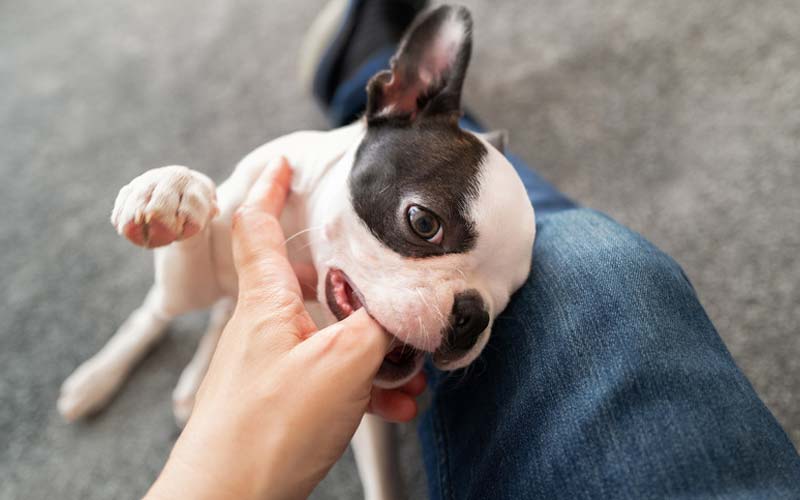
Conclusion How to Handle an Overprotective Dog
Managing and preventing overprotective behavior in dogs is crucial for maintaining a safe, happy, and balanced household. From recognizing early signs of overprotectiveness to understanding its root causes, the steps you take today can make all the difference in your dog’s future behavior.
To summarize, begin with early socialization to expose your dog to new experiences and people, helping them build confidence. Consistent training and reinforcement of positive behavior will strengthen your bond and establish clear boundaries. Don’t forget to keep your dog mentally and physically stimulated to reduce stress and prevent behavioral issues from developing.
If your dog’s protective behavior escalates or becomes unmanageable, seeking professional help from a certified trainer or behaviorist ensures the safety and well-being of everyone involved. And remember, consistent effort is key—successful behavior modification takes time, patience, and dedication.
Take action today: start implementing the strategies outlined in this article, and you’ll soon see a more confident, well-adjusted dog who can coexist peacefully with others. Whether you’re raising a puppy or managing an adult dog’s overprotective behavior, proactive care and training are the best tools to create a calm and happy environment for both you and your dog.